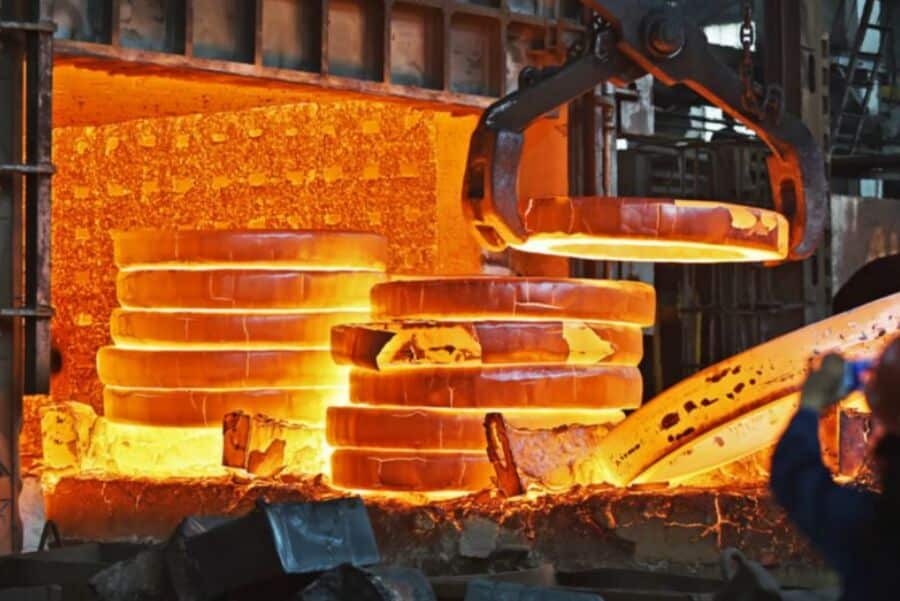Heat treatment refers to a process of altering the physical or chemical properties of materials through the application of controlled heating and cooling. This process is used to improve the mechanical properties of materials such as strength, hardness, ductility, and toughness. Heat treatment can also be used to remove impurities or to modify the microstructure of a material to improve properties such as corrosion resistance or to make it suitable for specific applications such as in the automotive, aerospace and construction industries. Some common heat treatment processes include annealing, tempering, quenching, and stress relieving.
Preliminary heat treatment
Preliminary heat treatment, also known as preheating, is a process in which the material to be welded or brazed is heated to a specific temperature before the actual joining process.
The purpose of preheating is to remove any moisture, oil, or other contaminants from the surface of the material, and to reduce the risk of thermal shock and cracking during welding or brazing. Preheating also helps to improve the flow of metal and reduce the amount of stress that can build up in the joint.
The temperature and duration of preheating depend on the type of material being welded or brazed, the thickness of the material, and the welding or brazing process being used. It is important to follow the recommended preheating procedures to ensure a high-quality, durable joint.
Annealing and normalizing
Annealing and normalizing are two heat treatment processes used to modify the properties of a material.
Annealing: Annealing is the process of heating a material to a specific temperature and then slowly cooling it down. This is done to reduce the internal stresses within the material, improve its ductility, and make it more workable. The process is often used for metals, such as steel or copper. There are several types of annealing, including full annealing, process annealing, and stress relief annealing.
Normalizing: Normalizing is another heat treatment process used to modify the properties of a material. The process involves heating the material to a specific temperature, holding it at that temperature for a set amount of time, and then cooling it down in still air. This process is specifically used to improve the strength and toughness of the material. Normalizing is often used on ferrous metals, such as steel, where it can improve the grain size and uniformity of the material.
The main difference between annealing and normalizing is the cooling process. Annealing is a slow cooling process, while normalizing involves cooling the material in still air. Additionally, the two processes have different effects on the properties of the material. Annealing improves the ductility and workability, while normalizing improves the strength and toughness.
Aging treatment
Aging treatment aims to slow down or reverse the signs of aging on the body. There are several ways to achieve this, including:
Skincare: using products such as moisturizers, sunscreens, and serums can help reduce the appearance of fine lines and wrinkles.
Exercise: regular exercise can help maintain muscle mass and prevent age-related weight gain.
Healthy eating: a balanced diet rich in fruits, vegetables, and whole grains can support overall health and prevent many age-related health concerns.
Hormone replacement therapy: some people may choose to undergo hormone replacement therapy to restore hormone levels that decline with age.
Medications: some medications can help treat age-related conditions such as osteoporosis and high blood pressure.
It’s essential to consult with a healthcare professional before starting any aging treatment to ensure that it’s safe and effective for your specific needs.
Search terms:
surface treatment for cnc machining parts
heat treatment for cnc machining parts

